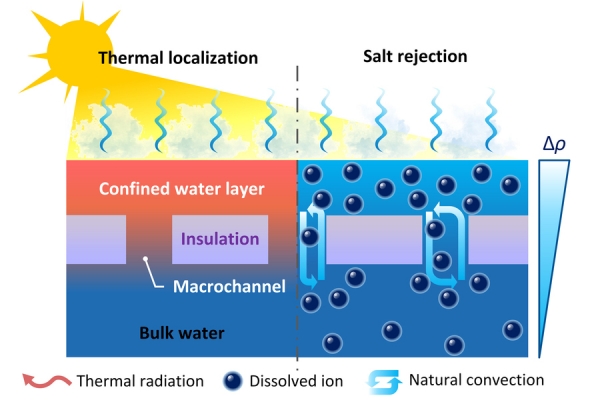An estimated two-thirds of humanity is affected by shortages of water, and many such areas in the developing world also face a lack of dependable electricity. Widespread research efforts have thus focused on ways to desalinate seawater or brackish water using just solar heat. Many such efforts have run into problems with fouling of equipment caused by salt buildup, however, which often adds complexity and expense.
Now, a team of researchers at MIT and in China has come up with a solution to the problem of salt accumulation — and in the process developed a desalination system that is both more efficient and less expensive than previous solar desalination methods. The process could also be used to treat contaminated wastewater or to generate steam for sterilizing medical instruments, all without requiring any power source other than sunlight itself.
The findings are described today in the journal Nature Communications, in a paper by MIT graduate student Lenan Zhang, postdoc Xiangyu Li, professor of mechanical engineering Evelyn Wang, and four others.
Read more at Massachusetts Institute of Technology
Image: MIT researchers have developed a solar-powered desalination system that is more efficient and less expensive than previous methods. In this schematic, a confined water layer above the floating thermal insulation enables the simultaneous thermal localization and salt rejection. (Credits:Image: Courtesy of the researchers)


